Lon Chaney as we know him really arrived with the release of this movie. It has everything we love about him: impressive makeup, criminal mischief, madness, murder and scenery chewed with rare abandon. Who wouldn’t want to see a movie about a double amputee criminal mastermind who plans to take over San Francisco with a gang of anarchists wearing stylish straw hats?
Home Media Availability: Released on DVD and Blu-ray.
Makeup? Who needs makeup?
Lon Chaney’s horror offerings tend to fall into two categories: The “big” famous monster classics like The Phantom of the Opera and The Hunchback of Notre Dame and the smaller scale crime/horror/macabre/crazy hybrids like The Penalty, The Unknown and West of Zanzibar.
The big monster classics get a lot of the hype but the smaller, crazier films were actually the more typical Chaney vehicles. Sometimes heavily made-up but just as often not, Chaney played sickos, psychos, masterminds and madmen. He was particularly acclaimed for his ability to portray characters who had lost use of their limbs… or had lost limbs altogether!
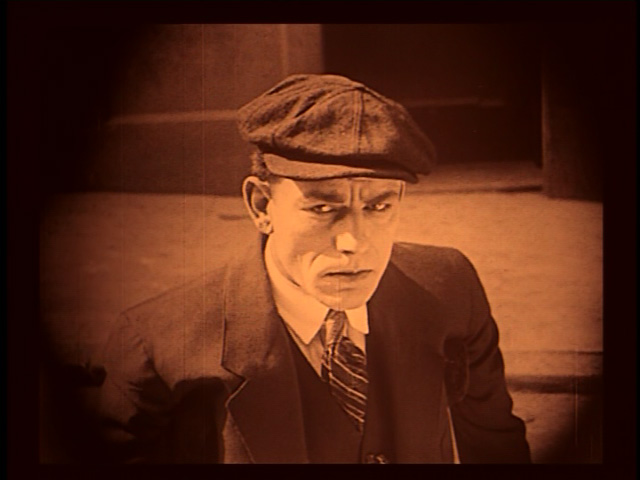
The Penalty can be considered the film that put Chaney on the map. He had made a splash in 1919 movie The Miracle Man playing (what else?) a conman/contortionist who feigns disability. However, The Miracle Man was actually intended as a Thomas Meighan vehicle. (It is now considered lost.) The Penalty, on the other hand, is clearly meant to showcase Chaney’s talents and it provided the blueprint for the movies that would become his bread and butter.
Based on a serialized novel by Gouverneur Morris, The Penalty slices, dices and expands aspects of the story to completely refocus its narrative. While the novel chose to concentrate on a pair of young lovers, the filmmakers knew that the most interesting character by far was Blizzard, a criminal mastermind who is also a double amputee.
The scenario adaptation is credited to Charles Kenyon, who would go on to write for such films as The Iron Horse, The Petrified Forest and The Night Nurse. We will go into further detail on the novel-to-film adaptation later but let’s take a closer look at the movie first.
The tale opens with a case of medical malpractice in old San Francisco. A green young surgeon named Dr. Ferris (Charles Clary) is called in on an emergency case. A young boy was run over and his legs are badly injured. The panicked Ferris immediately amputates the legs. A more seasoned surgeon arrives and tells Ferris the terrible truth: the boy would have survived and recovered without the amputation. Ferris has maimed the child for life.
The boy overhears the conversation and tries to tell his parents but the doctors are able to cover over the error by claiming that their patient is hallucinating.
Twenty-seven years pass and the boy has grown up to be Blizzard (Lon Chaney), lord and master of the criminal underworld. How bad is he? Well, he is introduced giving safe haven to a junkie named Frisco Pete (James Mason) who has knifed a prostitute. It turns out that Blizzard ordered the hit because the woman tried to leave his control. The police know who is behind the killing but Blizzard has bought the force and the manhunt is called off. The addict is paid off in drugs. Just another day on the Barbary Coast.
(Next time someone says silent movies are boring, bring up this film.)
Blizzard has pulled all of his dancing girls (oh, is that what he calls them?) off the streets and has put them to work making… straw hats? He works them at a feverish pace and turns his violent wrath on any perceived slackers. Whichever girl is deemed Blizzard’s current mistress is often called to his private apartment for romance and, more importantly, to work the pedals of his piano as he plays. Blizzard is quite the virtuoso but he has yet to find a pedaler who matches his skill.
I told you he was a colorful villain, didn’t I?
Since the police are completely corrupted, it’s up to the Secret Service to find out what’s what. Lichtenstein (Milton Ross) wants to know what Blizzard is up to and why he is manufacturing all those hats. He has just the man or, rather, woman for the job. Rose (Ethel Grey Terry) is described as the most daring agent in Lichtenstein’s crew. He warns her that she risks a fate worse than death but she simply says it is all in a day’s work.
Now we get to the romantic leads. Hurrah. Kenneth Harlan is Dr. Wilmot Allen, a colleague of Dr. Ferris. Yes, Ferris managed to keep his license. Hurrah again. And he has a daughter, Barbara (Claire Adams), who has decided to pursue a career in art.
Wilmot is horrified as he is in love with her but she wants to make sculptures and have a career of her own. She’s supposed to quit all that and marry him. It’s all about him! Him, him, him!
Anyway, Barbara says that she is trying to make a sculpture of Satan after the fall and she is just looking for the right model. If she fails, she will marry Wilmot. A real flatterer, that Barbara.
Barbara takes out an ad in the paper asking for a model who looks like Satan. Well, guess who fits the bill? Rose’s assistant, a street urchin named Bubbles (Edouard Trebaol), warns her that Blizzard is trouble but Barbara knows she has found her Satan and does not listen.
(The original novel later reveals that Bubbles is one of Blizzard’s many illegitimate children. The film scenario wisely leaves this wrinkle out as it adds one coincidence too many.)
Meanwhile, Rose has established herself in Blizzard’s hat factory. He has taken a particular liking to her because she plays the piano herself and knows how to peddle skillfully. As his mistress of the moment, she has access to his private rooms and is able to search them freely while he is off modeling for Barbara.
What she discovers is quite odd. Secret tunnels. A cellar armory with hundreds of rifles and those same straw hats. A modern, fully equipped operating room.
Blizzard did not become the master criminal of San Francisco by being stupid. He sees that his things have been meddled with and a telltale hairpin indicates that a woman is responsible. And the only woman with access to those rooms is…
(I do wish movie people would stop dropping incriminating doodads wherever they go.)
You see, Blizzard’s plan is to take over the city through an alliance with red anarchists. The anarchists will be outfitted in the straw hats as a kind of uniform. Why this is necessary, I have no idea. He also plans to revenge himself on Ferris by marrying Barbara. And, just to make things really interesting, he also plans to kidnap Wilmot and saw off his legs. Dr. Ferris will then be obliged to surgically attach them to Blizzard.
I think that covers his entire not-at-all-crazy scheme.
Will Blizzard get his revenge on Ferris? Is Rose toast? Will Wilmot lose his legs? Will San Francisco fall to stylishly-hatted anarchists? Come on, you know you want to see this.
Lon Chaney’s performance as Blizzard relied on his concealing his legs convincingly. These days, actors merely have to don a green sock and voila! the CGI takes care of the rest. Of course, there is still discomfort and acting chops are still required but Chaney deserves credit for what he was able to accomplish without modern technology.
Chaney fit his knees into leather stumps, which forced his legs into a tightly bent position. Then to compensate for the added thickness, he padded up his shoulders and chest. Chaney was not a large man, which allowed him leeway to subtly bulk up his frame. (Blizzard in the book was described as being a large, brutish figure.) A cleverly cut jacket completed the illusion.
The outfit was incredibly painful to wear and Chaney could only act in it for ten minutes at a time before having to be released. As it was, he permanently injured muscles in his knees. The physical discomfort likely added to the intensity of his performance.
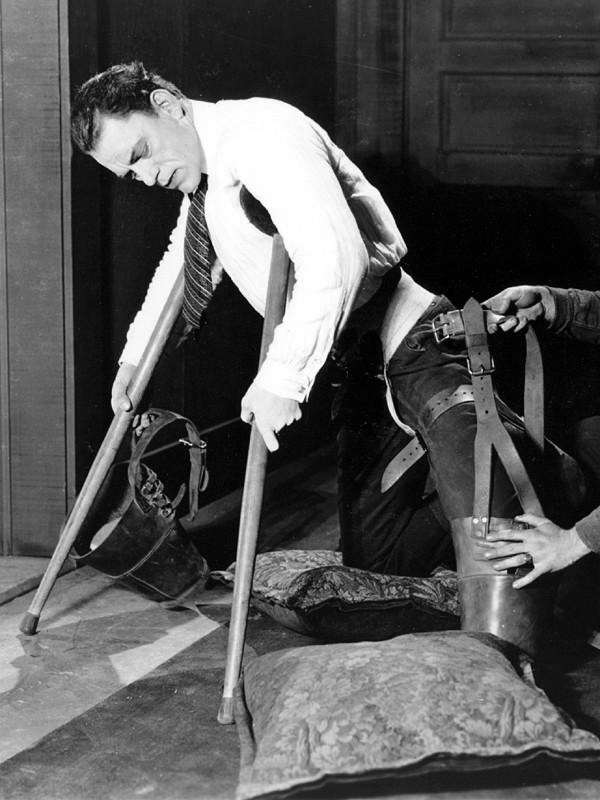
After all, technical skill would be useless if Chaney did not have the acting chops to back it up. I like to say that Chaney could be even scarier without makeup. I mean, look at that face. Brr!
One of the finest scenes in the film is the one in which Blizzard has to decide whether or not to kill Rose. She is under his piano. He asks her for a hairpin and, as he continues to play, surreptitiously compares it to the one he found in his private rooms. They match. Blizzard begins to play with greater intensity. He tells Rose they are playing a death song. He clearly means to murder her with his bare hands. We know he is capable of doing it. He has already physically attacked two different women onscreen.
Then something happens that Blizzard did not expect. He gets caught up in his own music. When the song finishes, his rage is spent. He has never played so well before and he never could have done it without Rose. He can’t kill her.
The scene calls for many extremes of emotion. We watch Chaney turn from sarcastic anger to murderous fury to euphoria and finally confusion and regret. It’s powerful and he hits every note perfectly.
Blizzard is a complex character. He is intelligent, witty and has a shred of sentimentality still clinging around the edges of his personality. Chaney captures all this and, due to his extreme ability to control his own body, makes the audience truly believe that he is an amputee.
Blizzard’s lair is full of ropes and ladders and poles, devices designed for a man shortened by the loss of his legs and with his arms built up through constant use. Chaney uses these devices casually, as if he has been living with them for years. They are not props, they are part of his world. (So many actors have attempted this sort of characterization and failed that I hardly need to emphasize how impressive this is.) This ability to utterly inhabit his characters and pour himself into their physicality is, I think, Chaney’s single greatest asset.
In fact, Chaney was so convincing that the original release of The Penalty included a short snippet of footage showing Chaney out of character and walking. This footage has since been lost. Chaney’s fame made it unnecessary to include evidence of his skills when The Penalty was re-released.
The characterization of a tortured monster would be a continuing theme throughout Chaney’s career but it is interesting to see such an accomplished performance in what is essentially his first starring role.
Even though he is a psychopath, audience sympathy tends to wander over to Blizzard. This is partially due to Chaney’s talent and charisma and partially because Ferris and Wilmot’s attitudes have aged very badly.
Ferris committed malpractice and then covered over his crime by painting an innocent child as a liar. When he and the adult Blizzard finally meet, it is because Ferris cannot stomach the idea of his daughter keeping company with a “cripple.” It is only when Blizzard reveals his own identity that Ferris tries to make amends.
So, we have a doctor who chopped off a kid’s legs, makes him out to be a liar and then just forgets about him for the next three decades? Nice guy.
Wilmot is equally charming. In addition to his sniveling “marry me, marry meeeeeeeeee” pity party, he also physically bullies Barbara’s artistic friends. His dislike of Blizzard is not founded on the fact that he is a deranged criminal overlord. That would be understandable. Oh no, Wilmot’s objection to Blizzard is that he is an amputee. Apparently, Barbara can befriend all the deranged criminal overlords she likes, provided they still possess all of their limbs.
Both Ferris and Wilmot view the talented Barbara’s sculpting career with undisguised irritation. How dare she? Well-to-do young women are good for two things: stroking men’s egos and breeding.
This infantilizing attitude toward Barbara comes back to bite both men at the climax. Blizzard contacts each of them and says that Barbara is at his house and they had better come… or else! The thing is, Barbara has not left her studio and is in no danger.
I like that Blizzard used Ferris and Wilmot’s sexism against them. Had they given Barbara any credit, they would have simply phoned her studio to make sure she was okay. Let that be a lesson to you, paternalistic dopes!
Neither Kenneth Harlan nor Charles Clary possess the necessary acting chops required to make these parts bearable. Fortunately, their roles are cut down considerably from the novel.
As for the ladies, I thought that Ethel Grey Terry was excellent as Rose. A stage veteran who was in her late thirties, Terry plays Rose with a professional cockiness and tinge of weltschmerz. Rose is a woman doing a man’s job (at least according to the attitudes of the day) and you never doubt for a moment that she earned her position. True, the film has her behave emotionally and fall for Blizzard but he behaves in an equally emotional manner when he refuses to kill her. Meanwhile, Claire Adams is very pretty as Barbara but her role is so small that it is difficult to judge.
Wallace Worsley, while lacking the carnie sensibilities of Tod Browning, directs the film with considerable style and flair. He makes subtle use of shadow and generally creates a gritty, deranged world for Chaney to inhabit. (The two men would work together again on The Ace of Hearts and The Hunchback of Notre Dame.)
I was particularly impressed by the sophisticated use of cross-cutting. Motion pictures were just starting to shed their awe of the stage and the grammar of the movies was growing every day. Editing could accomplish what was nearly impossible on the stage: allow the audience to be in two places at once. D.W. Griffith famously used cross-cutting to ramp up suspense during his patented races to the rescue. Worsley uses his cross-cuts for atmosphere, irony and pacing.
One interesting thing about The Penalty is that it breaks from the usual pattern of film adaptations. In this case, the movie is much better than the book. (You can read the novel for free online. It is in the public domain.)
While the 1913 novel and the film follow basically the same plot, the book’s main character is Barbara and a great deal of time is spent focusing on her romance with Wilmot (who is a bankrupt Wall Street worker instead of a doctor). Most anyone who has seen the movie knows that the young lovers are by far the most boring characters. Given the choice between following a legless criminal mastermind and his secret service agent lover or a pair of swells who are slumming and talking baby talk, who would you take?
Sample dialogue from Wilmot:
“A man I hadn’t seen for years and years–and only the once at that–stopped me in the street, told me I was broke, and offered to lend me money. Wilmot accepted, and is now plenty flush enough to blow to lunch, thank you.”
Blech.
The film, of course, belongs to Blizzard and Rose’s role is greatly expanded.
Since the book focuses far more on Barbara, we get even more of the dated, chauvinist speeches about how a woman should not have artistic ambitions and is supposed to be popping out babies instead. I mean, how dare the girl want to foster her talents (and everyone acknowledges she is talented) when there is a reasonably stupid fellow with heavy debts who wishes to marry her? There is clearly something wrong with her.
More actual dialogue from Wilmot:
“When a girl that ought to go in for marriage and that sort of thing takes to being talented–I call it a tragedy.”
Even more distressing, the book characters know of Blizzard’s criminal empire (far more than their film counterparts) but tales of high and low crimes are not what disgust them. No, they feel that Blizzard’s single greatest character flaw is the fact that he is an amputee. This attitude was present in the film but even more awful in the book.
Still more actual dialogue from Wilmot:
“And at that–good God, you might stand it, if he was a whole man! But he isn’t. It’s horrible! He has no legs–and you want to stamp on him till he’s dead.”
There’s nothing I like better than a leading man entertains murderous thoughts toward the disabled. It just adds to his charm, don’t you think?
I don’t know about you but I am ready to gleefully hold this jerk down while Blizzard saws off his legs.
Contemporary purity mavens also took particular umbrage to the idea of a legless man romancing young, pretty girls. These professions of disgust really drive home the desperate situation faced by the disabled and the enormity of Dr. Ferris’ crime. (You can read the whole lowdown on calls to censor the film in Kevin Brownlow’s excellent book Behind the Mask of Innocence.)
The film adaptations plot is also streamlined. For example, Bubbles is Blizzard’s son in the book but there is also another, older secret son who works for Lichtenstein and is also in love with Barbara.
The single biggest improvement that the film makes, though, is the ending. (Obviously, a spoiler alert is in place.)
Rose’s character is considerably expanded from the book and she is given a lot more to do. Book Rose is a fairly low-ranking agent who immediately betrays her former comrades to Blizzard. Movie Rose merely stops the flow of information. Book Rose gets locked away for much of the climax. Movie Rose takes an active role, rushing to get Lichtenstein when she hears Blizzard’s plan to cut off Wilmot’s legs and marry Barbara.
Book Blizzard merely uses Rose, pumping her for information. Movie Blizzard respects her musical skill and seem to have genuine regard for her, even though he remains cruel. The fact that Rose is a secret service agent is not so much a motive to use her as it is an overpowering aphrodisiac. The book has Blizzard pining for Barbara even though he marries Rose. Movie Blizzard clearly knows the better deal when he sees it and only has eyes for Rose once his head gets sorted out.
Now, about that head getting sorted out… It turns out that the accident that injured young Blizzard’s legs also scrambled his marbles. Dr. Ferris did not notice it at the time (is there no end to this man’s incompetence?) but he is later able to operate on Blizzard’s head and return him to a state of sanity.
In the book, Blizzard marries Rose (reluctantly and out of guilt as he is still carrying a torch for Barbara) and settles down to a life of philanthropy. Barbara marries Wilmot, realizes the error of her ways and begins popping out babies. It’s all rather flat and the miraculous operation fairly smacks of deus ex machina.
In the film, Blizzard cheerfully marries Rose, forgets all about Barbara and settles down to a life of philanthropy. However, his old gang is nervous. He knows everything about their activities and now that he’s gotten religion, so to speak, he may decide to squeal.
Frisco Pete, Blizzard’s junkie assassin, sneaks into Blizzard’s house and shoots him as he is playing the piano. Saying that he has paid the penalty for his evil, Blizzard dies in Rose’s arms.
Hollywood is often accused of ruining books by slapping on happy endings. Well, in this case, Hollywood turned its nose up at the happy ending offered and created a tragedy instead. This may have been to please the censors (criminals being let off the hook was a particular pet peeve) but it also makes the story stronger.
Blizzard has killed both directly and indirectly. Usually, the victims of an antihero or redeemed villain are conveniently forgotten by the time the film ends. In the case of The Penalty, Blizzard realizes that his death balances the cosmic scales of justice and accepts his fate. This does not come off as corny or manipulative as we in the audience have seen Blizzard’s victims die. We sympathize with him but we still want him to pay.
The Penalty is one of my favorite Lon Chaney vehicles and it is one of those “only in the silent era” movies. The twisted plot and sleazy atmosphere are enormous pluses but Lon Chaney’s virtuoso acting really sells it. It is also one of my favorite silent films and I highly recommend it.
Movies Silently’s Score: ★★★★½
Where can I see it?
The Penalty has received high-quality release on DVD and Blu-ray thanks to Kino Lorber. The DVD release of the film was somewhat controversial in that it included synth/industrial score. 99% of silent film fans hated it, it seems. (To be honest, I am part of the 1% that didn’t mind it.) Kino Lorber must have taken the complaints seriously as the Blu-ray release had a completely new orchestral score performed by the Mont Alto Motion Picture Orchestra.
☙❦❧
Like what you’re reading? Please consider sponsoring me on Patreon. All patrons will get early previews of upcoming features, exclusive polls and other goodies.
Disclosure: Some links included in this post may be affiliate links to products sold by Amazon and as an Amazon Associate I earn from qualifying purchases.
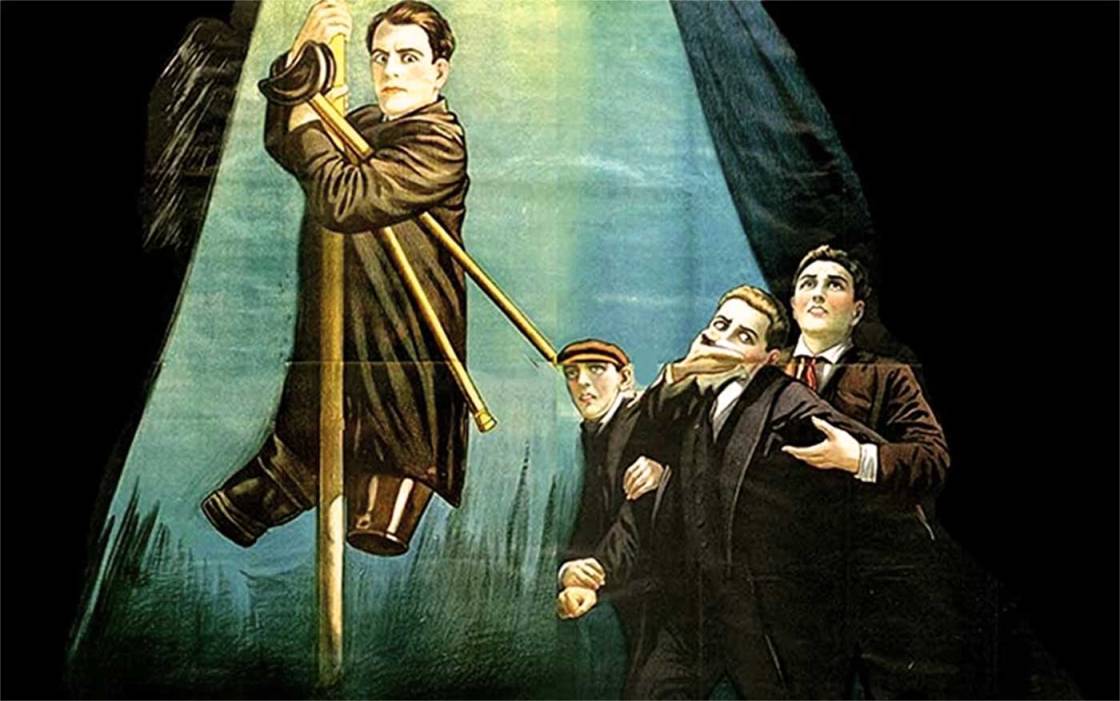
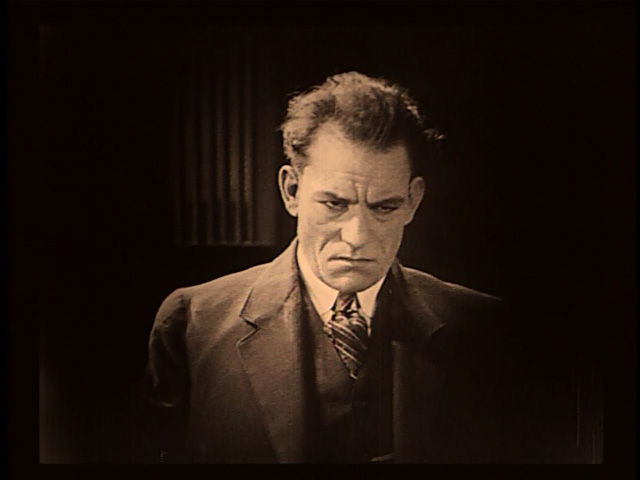
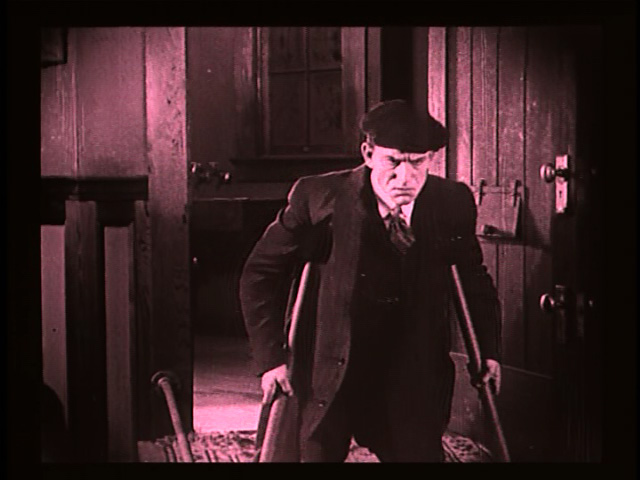
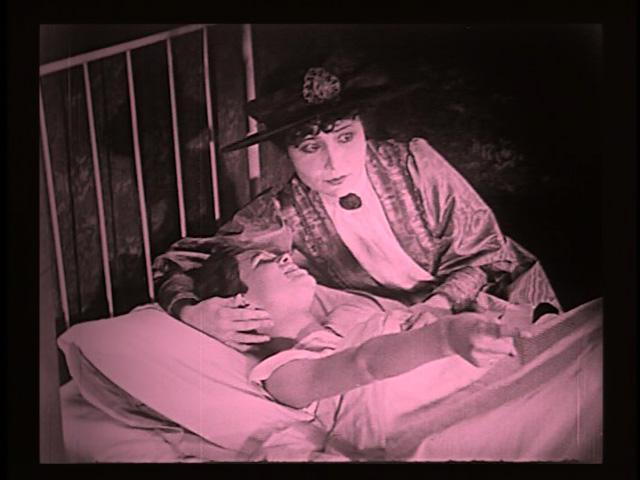
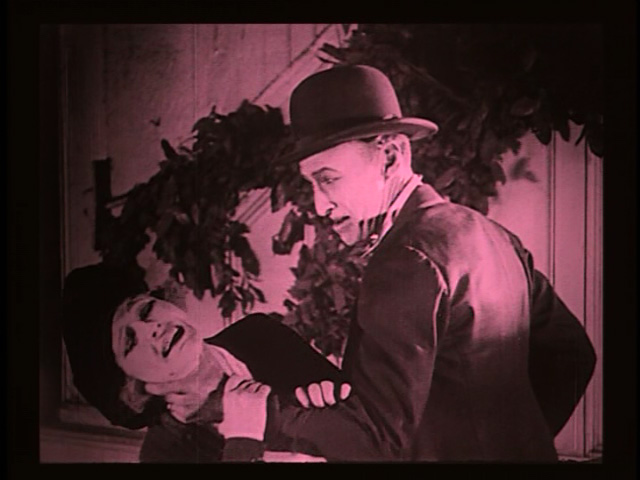
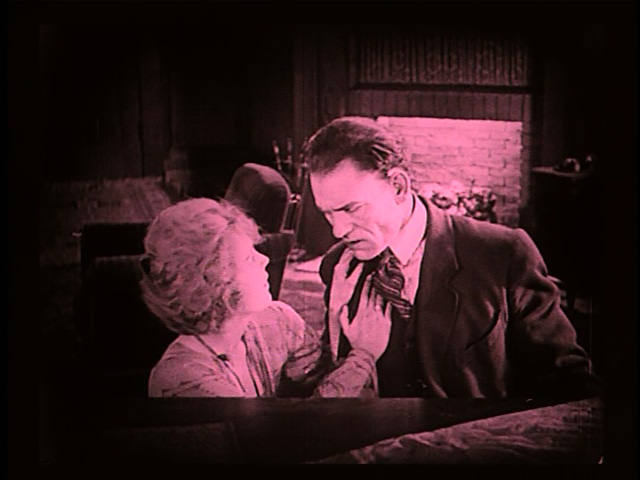
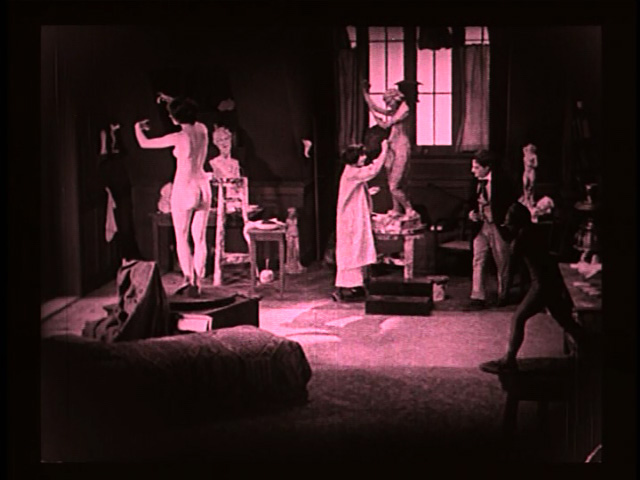
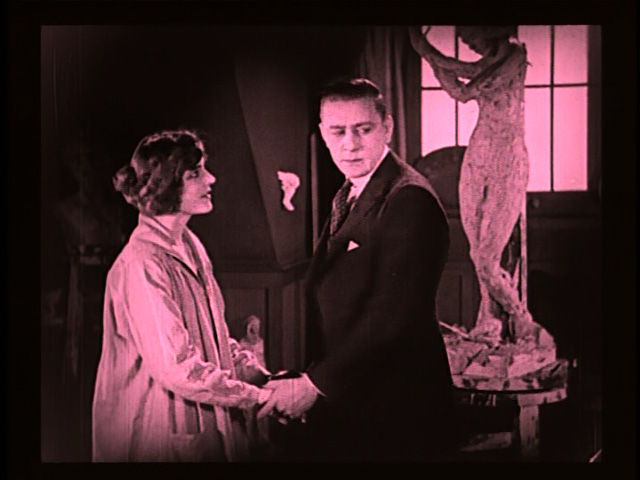
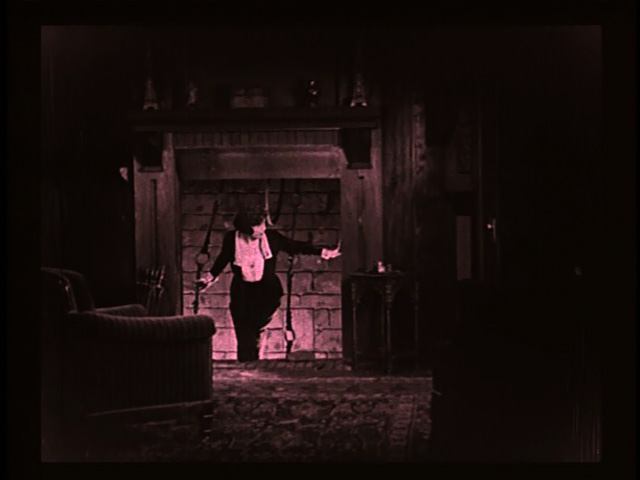
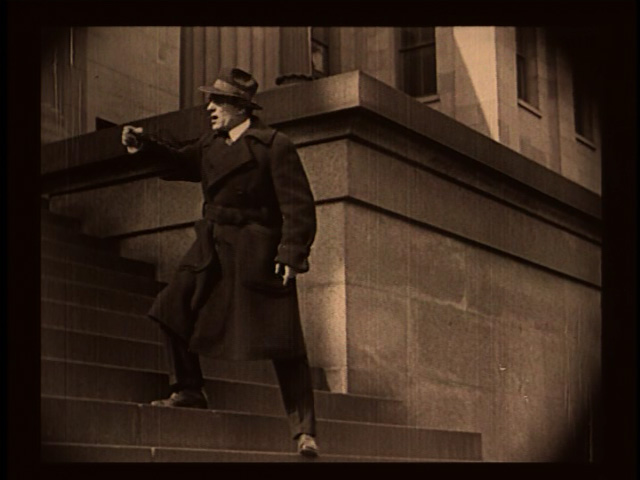
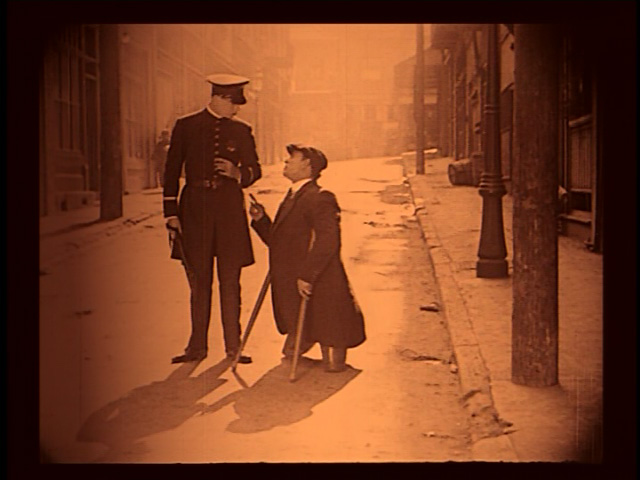
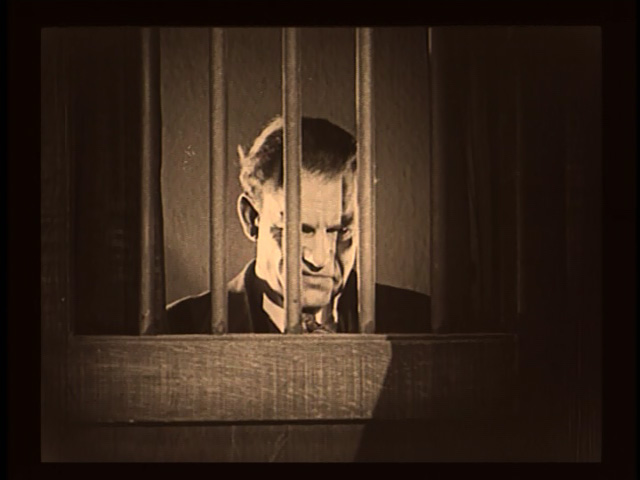

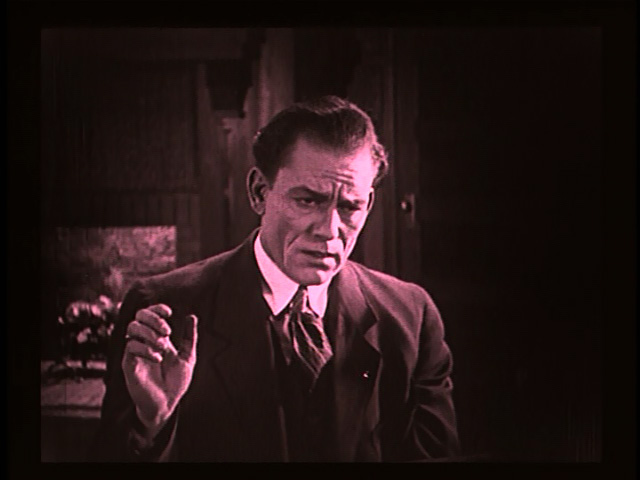
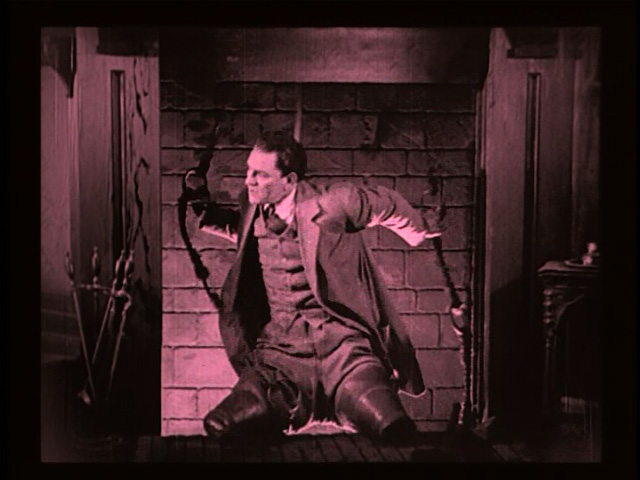
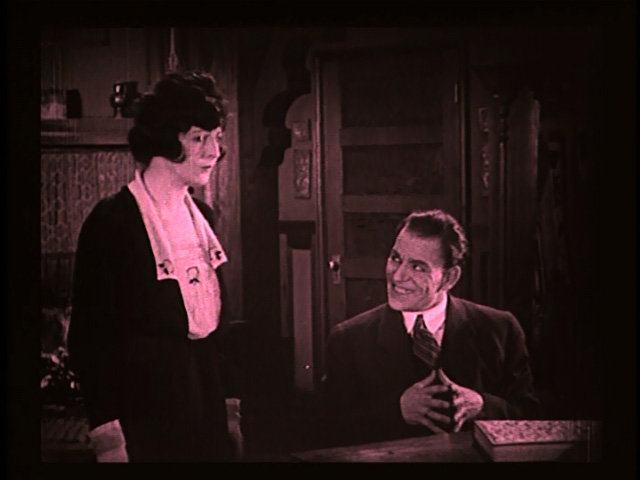
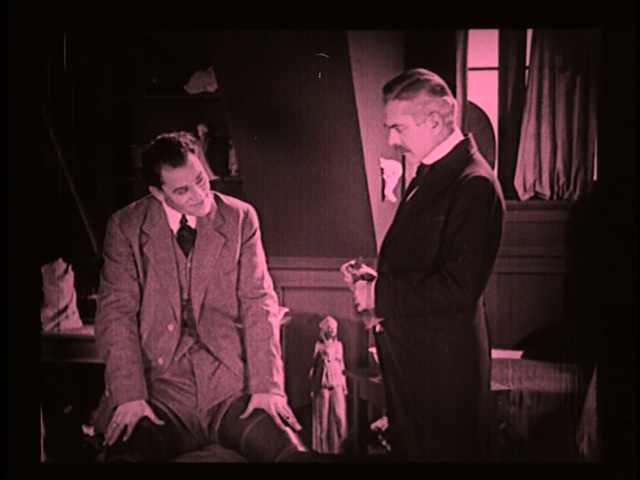
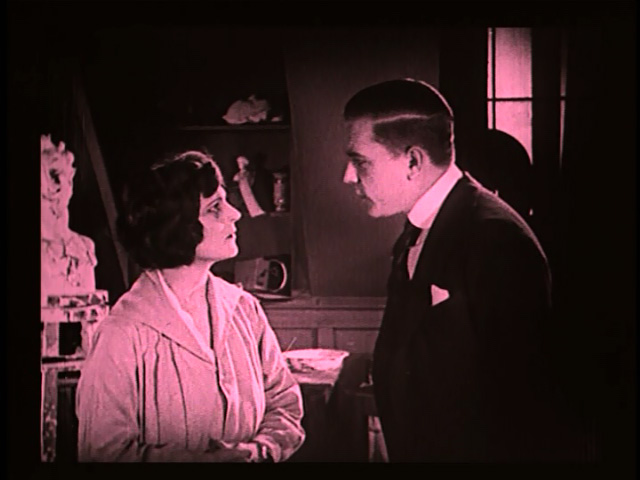
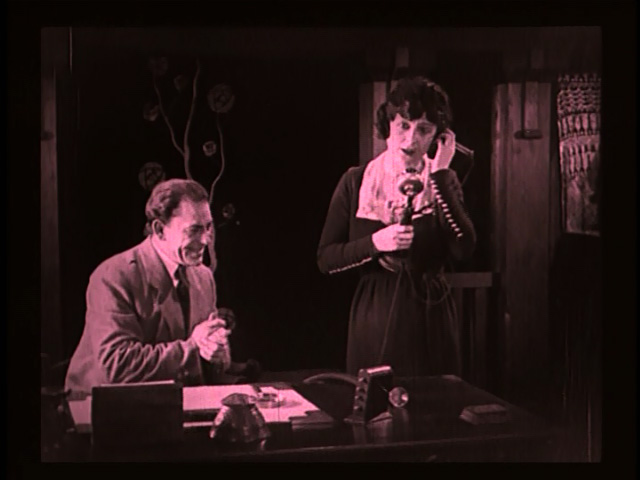
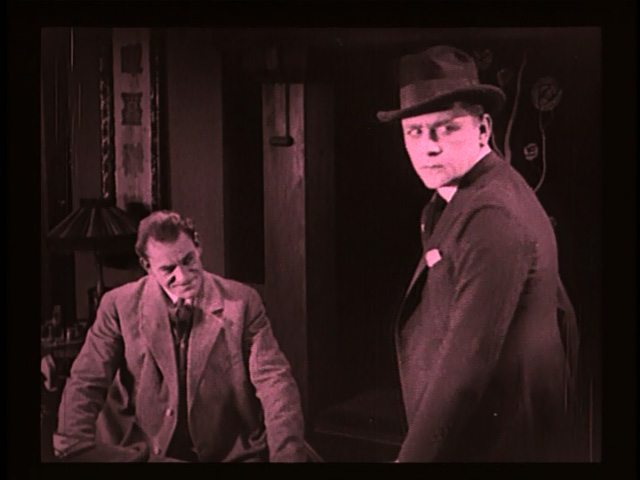
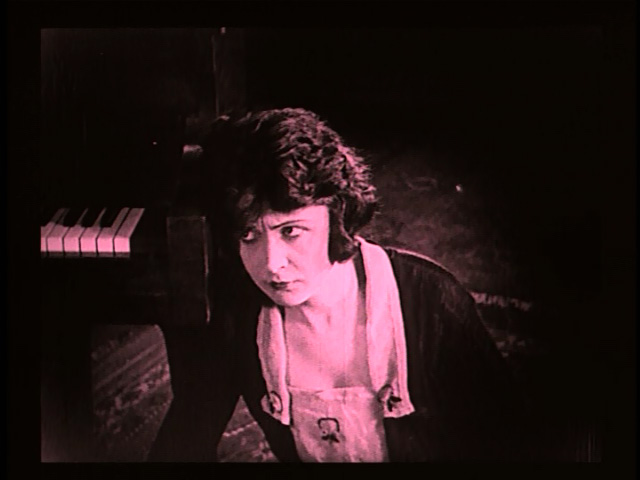
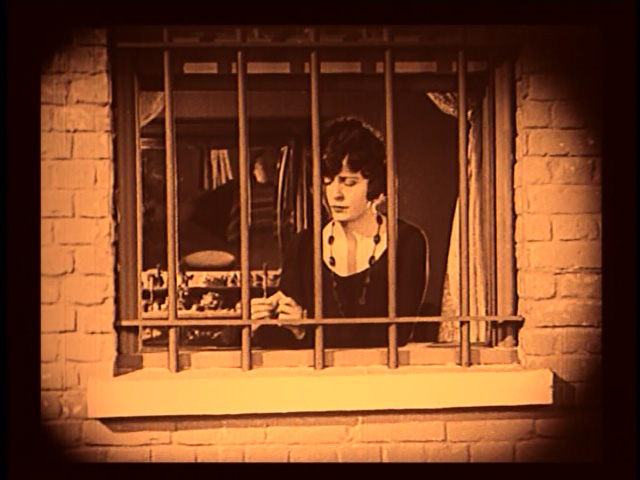
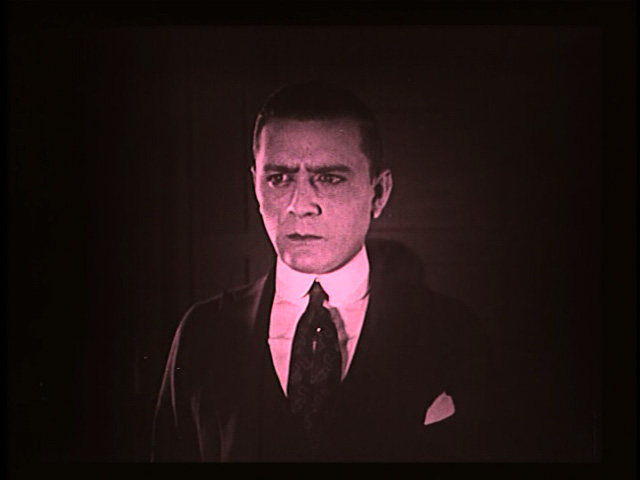


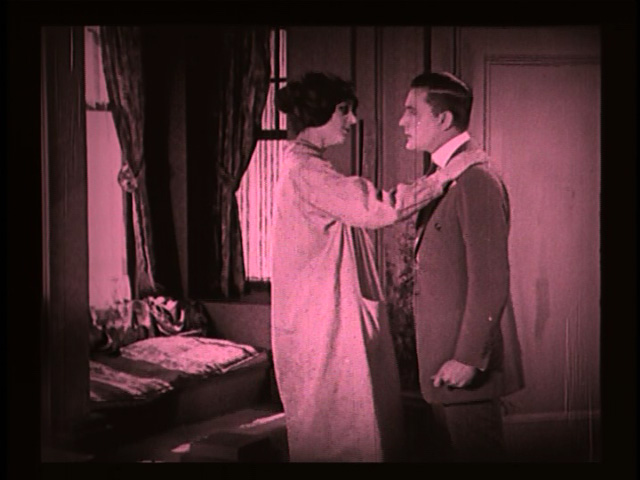
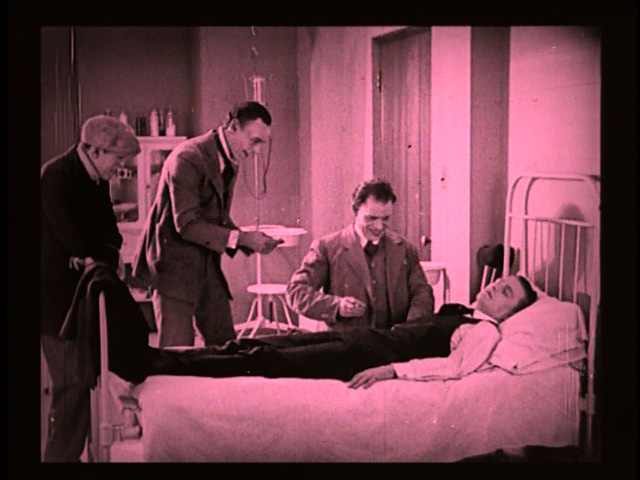
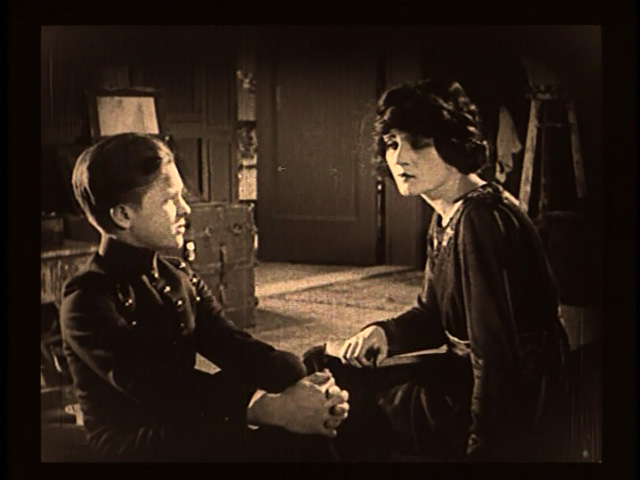

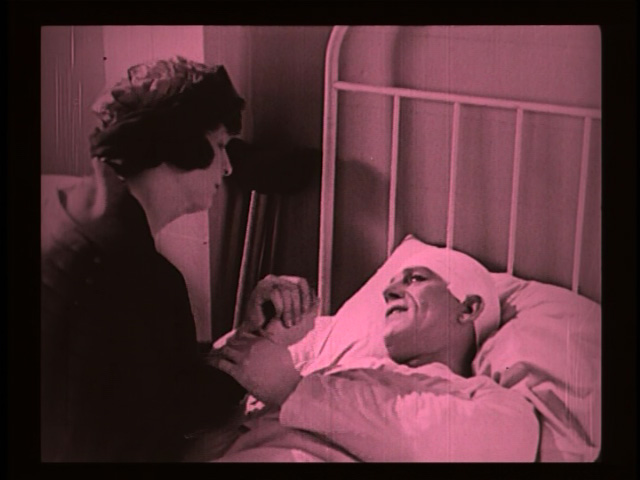
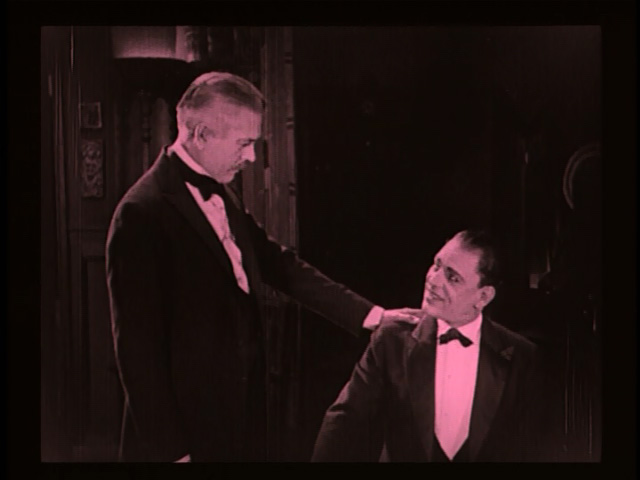

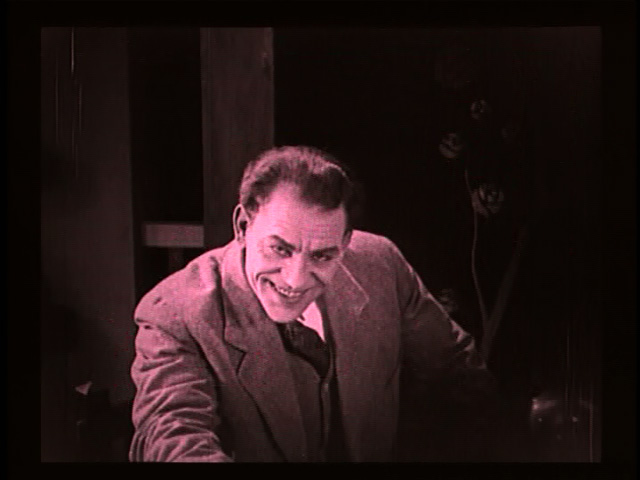
You have me quite anxious to see this. Chaney always impresses me. His performances impress and touch me so deeply that I have often been convinced that I have heard his character speak. That is power indeed.
Thanks! Yes, I don’t think any other actor could play tortured monsters quite so well. He was a national treasure.
You’re right, this does sound like a film one could use to convert non-enthusiasts. And James Mason knifes a prostitute…I don’t remember him doing that in ‘North by Northwest’! That alone would get me to watch this one…thanks for a cool review, Fritzi!
So glad you liked it! It’s a different James Mason (unfortunately, as it would be a great bit of movie trivia) but still a shocking film. However, you can still have fun with the fact, kinda like how I like to talk about silent movie Harrison Ford. 😉 Thanks for stopping by!
I’ve read Michael F. Blake’s trilogy of Lon Chaney books and I enjoyed reading the details concerning the making of The Penalty. Chaney is so skilled at playing the most twisted of characters and the harness he used looks so extremely painful. It’s funny how after all the improvements in make-up and special effects on film over the years that Lon Chaney’s methods still reign supreme and look the best (at least in my opinion). He was a make-up master!
P.S. You have a wonderful blog. It’s nice to see silent films so appreciated. 🙂
Thank you, so glad you are enjoying it! Yes, Chaney is quite fortunate to have Mr. Blake chronicling his career. It’s wonderful what a passionate and eloquent biographer can do for a reputation.
I watched this for the Chaneys blogathon and wow. Just wow. I loved it, and so far I can consider The Penalty my favorite Chaney movie (The Miracle Man could be my favorite, if it wasn’t lost). You did a great job with th review, as always. I didn’t know there was a novel. It sounds very cheesy to me.
Don’t forget to read my contribution to the blogathon! 🙂
Kisses!
http://www.criticaretro.blogspot.com.br/2014/04/peter-lorre-o-vilao-subestimado.html
Thanks for stopping by! Yes, the novel is pretty horrid. But what a movie to come out of it!
I love The Penalty to pieces. The sexism from the “heroes” always makes me roll my eyes, but Chaney and Terry are fantastic.
Yes, they really steal the show
I can’t wait to see this now! =) thanks
Glad you liked it 🙂
Wowsa! That last full screenshot says it all! He’s been scaring me since I was little; he’s so darned intense, no matter what he did! I think of all the spoiled, actors we have now and scoff. 🙂
Thanks for the great review…lots of good work there! I’ll see ye at the Snoopathon! Thanks for that, by the way, that’s what inspired me to do this villain-athon, too!
Thank you so much! Yes, they certainly do not make ’em like they used to. 😉
Love it love it love it. I saw the Unknown at the National Gallery with live accompaniment about 10 years ago — (allegedly) armless knife thrower…what could top THAT? Well,*this* apparently. Thank you!
Thanks! Yes, I think this is definitely Chaney at his Chaney-est. 😉
I enjoyed your interesting write-up and all of the background information. I doubt that I’ll ever see this film — it seems far too creepy for my taste — but if I were so inclined, your post would definitely make me want to get ahold of a copy straightaway! Good stuff.
It’s definitely not a film for everyone. 😉 Thanks so much for co-hosting the event. I am having a lot of fun
The things Chaney put himself through for authenticity and for the pleasure of us movie fans, is just amazing and you’re right it lasts and works so much better than any fx you could buy or conjure up on a machine. I like this movie a lot, great choice for the thon and thanks for taking part!
And thanks so much for hosting!
I have wanted to see this film for years, but never committed. That will all change now, thanks to this fantastic, in-depth post. What a story! What a acting opportunity. Chaney is obviously a talented man, but this looks as though it could possibly be his best. I can’t wait>
Thanks so much! Yes, this ties with WEST OF ZANZIBAR for being my favorite Chaney film. It’s a complete blast to watch and Chaney is astonishing.
I’ve been trying to decide if this is too scary for me…and I think it might be. Perhaps one to save for a mid-day, summer-time watch! That said, I really appreciated your post and all the background information: I want to love it but fear I might be too much of a wimp!
I wouldn’t describe it as scary in the horror film sense, more deeply disturbing. Not sure that helps, though. 😉 For what it’s worth, I am a bit of a fraidy cat myself.
This film looks utterly compelling. I can’t believe the lengths Lon Chaney went to for his roles, and this is one notable example. That contraption he wore looks SO PAINFUL. I can’t even imagine.
I’m so glad you chose Chaney, and this film, to profile in our blogathon. Thanks so much for participating. 🙂
He definitely had guts!
And thank you so much for co-hosting, it has been fun!
Now that I’ve read your post I’m going to search out The Penalty. Lon Chaney is such a great actor and innovator. Compare what he had to go through here in the Silent Film era to how they made similar effects in a film like Forrest Gump. Thanks for all the information.
Glad you liked the review! Yes, Chaney’s physical work is so impressive.